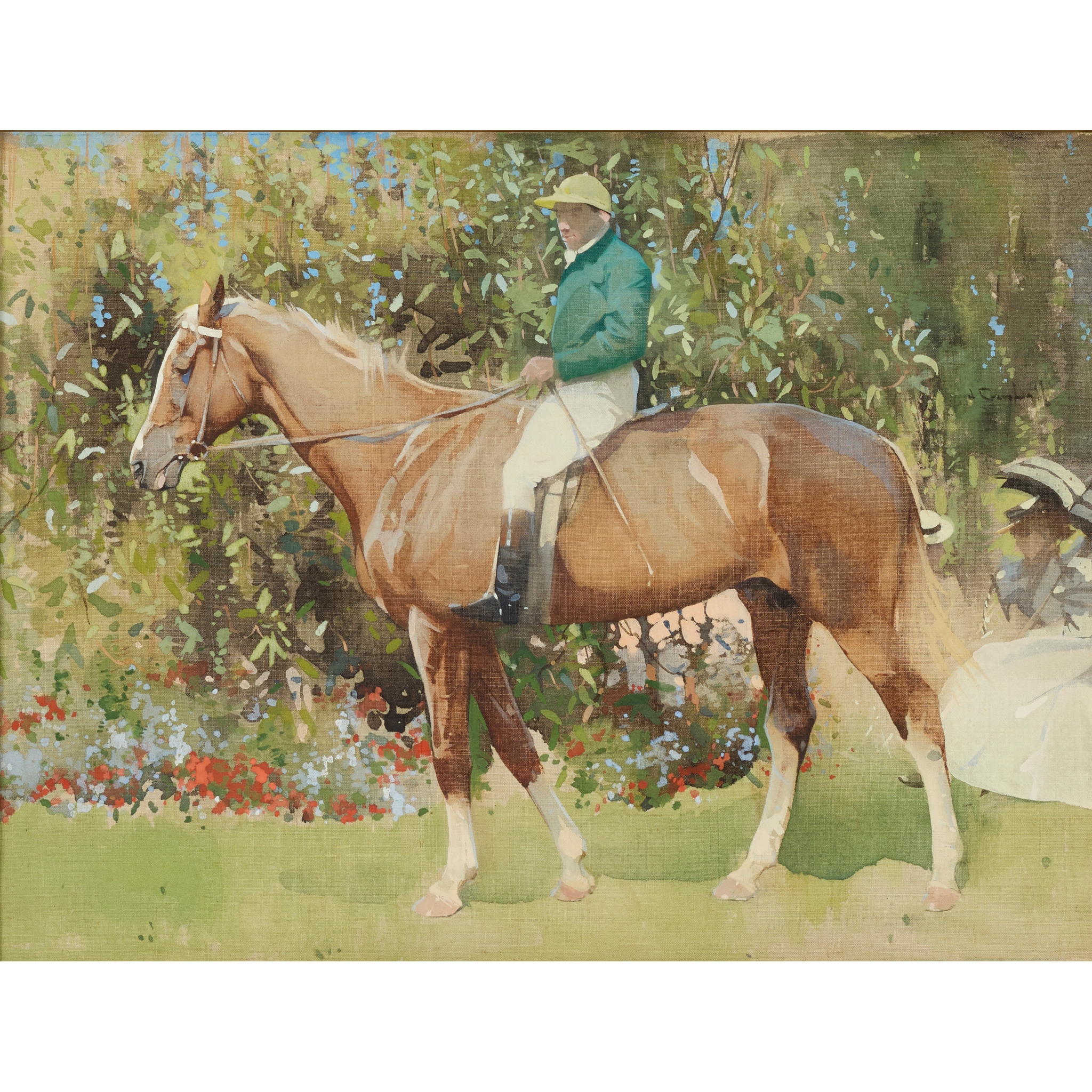JOSEPH CRAWHALL R.S.W., N.E.A.C. (SCOTTISH 1861-1913)
IN THE PADDOCK
£25,200
Scottish Paintings & Sculpture
Auction: Evening Sale | Lots 112- 206 | Thursday 05 June from 6pm
Description
Signed, gouache on linen
Dimensions
27.9cm x 37.5cm (11in x 14.75in)
Provenance
The Fine Art Society from where acquired by the present owner in 1985
Exhibited:
The Fine Art Society, Festival Exhibition: Camels, Cobwebs and Honeysuckle, 1985. no.24
Literature:
Vivien Hamilton, Joseph Crawhall 1861-1913: One of the Glasgow Boys, John Murray, London, 1990, pp.135-36, ill.no.115.
Footnote
A watercolour virtuoso, Joseph Crawhall is best known for his highly personal and, at times, witty depictions of animals and birds. Traditionally associated with the Glasgow Boys, Crawhall shared in the group’s collective appreciation for light, colour, composition and design. Unlike his contemporaries, however, he aimed to simplify his style, capturing everyday scenes with few lines and minimal brushstrokes. Sir John Lavery once said of Crawhall: ‘No artist I have known could say more with fewer brushstrokes’.
By all accounts, Crawhall maintained a keen interest in horses and enjoyed nothing more than a day out at the races, often accompanied by an excited niece or nephew. Accordingly, he made a number of paintings along this theme. In her study of Crawhall’s life and work, Vivien Hamilton speculates that In the Paddock’s ‘pose, accuracy and detail suggests that Crawhall might have made use of photography.’ Based on the style and subject, Hamilton suggests a date between 1894 and 1900. The scene portrays a mounted rider surveying his surroundings, while behind two women in deep discussion sit under a parasol, both dressed for a summer’s day in straw hats and white dresses. Hamilton reflects that ‘In the Paddock [is] unusual in his treatment of the theme in that, whilst concentrating on horse and rider, they suggest the social aspect of the occasion.’ ((Vivien Hamilton, op.cit., pp.135-137). Like the mounted rider, Crawhall was quiet by nature, preferring to sit back and observe his surroundings in contemplation.

